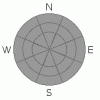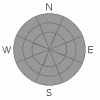SPECIAL ANNOUNCEMENT |
 |
This is the last forecast of the 2010/2011 season & I want to thanks the folks who make this program possible.
First, thanks to the Friends of the Utah Avalanche Center who continue to support this program and provide it's funding year after year. Their support is the backbone of this operation.
Next, I offer a HUGE thank you to both Arctic Cat & the good people & Big Pine Sports in Fairview. In an incredible partnership, Arctic Cat & Big Pine Sports provide me with a brand new snow machine each season. Without this machine, I would not be able to see enough terrain to develop a forecast. Thank you for your awesome contribution to avalanche safety in Utah, you guys rock!
A special thanks goes out to Steve Cote. Steve is my faithful field partner every day on the Skyline; blowing snow, wind or rain. Thanks for volunteering your time & energy Steve, it's greatly appreciated!
Big thanks to the Beck Brothers & Snowbigdeal.com. As a sponsor of this advisory they help make this thing work, thanks guys!
We had more observations submitted from users this year than ever before, thanks to all who submitted observations, they help make the forecast that much better & help to save lives too! Shout out to Darce Trotter who puts together awesome observations almost every week, thanks Darce!
Last, a special thank you to my colleagues at the Utah Avalanche Center. The energy each of you put into our work is astounding.
Anyone I forgot thanks for your help too! |
|
|
BOTTOM LINE
Danger by aspect and elevation on slopes approaching 35° or steeper.
(click HERE for tomorrow's danger rating)
|

Danger Rose Tutorial
|
This is the last forecast for the 2010/2011 season. General information about avalanche hazard is available below. |
|
|
CURRENT CONDITIONS |

|
While this is the last forecast of the season, I'm passionate about avalanches & the Manti-Skyline Backcountry, so, I'll continue to review & publish any observations that come in. You can find them here. |
|
|
RECENT ACTIVITY |
|
|
|
THREAT #1 |

|
| WHERE |
PROBABILITY |
SIZE |
TREND |

|
| No probability identified. |
|
|
|
|
|
We're not quite into a full on spring snowpack yet, but, it's not far off. The steady cycle of warm days & cool nights has a big effect on the snowpack, and a good rule of thumb is this: When the snowpack is firm & supportable in the mornings after a good overnight refreeze, things are good to go. But, as warm temperatures & sun begin to warm the pack, it begins to loosen up from the top down. If you get off your machine and suddenly find yourself sinking in to the once supportable 'pack, then it's time to call it a day.
My colleague Brett Kobernik produced this explanation earlier this week & I think it's worthwhile:
Often when we think things are going to come unglued it ends up being a non-event. The weather needs to be just right to produce a natural wet avalanche cycle. Some days when you expect wet activity, a few clouds roll through and keep temperatures just cool enough so it doesn’t happen. Other days when you think cloud cover will keep things cool enough, it “greenhouses” and produces a wet cycle. A slight breeze can be enough to keep things in check when you might think it’s going to let loose. But, will the warm temperatures override everything? To tell the truth, we just don’t know exactly how these warming events will unfold. The bottom line is that in the spring when the indicators are there, you need to behave as if wet activity WILL happen always thinking about avoiding the bottoms of avalanche paths and staying out of gullies. Plan your route so that if things start to get bad you have a safe exit. |
|
|
THREAT #2 |

|
| WHERE |
PROBABILITY |
SIZE |
TREND |

|
| No probability identified. |
|
|
|
|
|
Here it is, the last forecast of the year, and we're still talking about Deep Slabs. In steep rocky locations facing the north half of the compass, it's still entirely possible to trigger a deep, destructive & potentially un-survivable hard slab as evidenced by last weekend’s fatal accident. These low probability/high consequence events are notoriously difficult to forecast, but they are certainly avoidable by simply avoiding the big steep bowls. If you do decide to jump into one of these larger features, be aware that there is a chance of pulling out the big one. Furthermore, stay heads up to how warm the snowpack is getting. At some point the long warm days are going to re-activate the deep slab as melting water percolates though our snowpack and lubes up the deep buried weaknesses. |
|
|
THREAT #3 |

|
| WHERE |
PROBABILITY |
SIZE |
TREND |

|
| No probability identified. |
|
|
|
|
|
Cornices are massive at this point. Warm temperatures will weaken them and you can expect cornices to fail naturally throughout the spring. Give these monsters some space; you certainly don't want to be underneath one when it falls! |
|
|
GENERAL ANNOUNCEMENTS |
See or trigger an avalanche? I'd like to hear about it! You can reach me on my cell phone: 801-824-0305 or shoot me an email: grant (at) utahavalanchecenter (dot) org Observers may choose to remain anonymous if they wish.
See you next year! Have a great summer & stay safe out there! |
|
|
This information does not apply to developed ski areas or highways where avalanche control is normally done. This advisory is from the U.S.D.A. Forest Service, which is solely responsible for its content. This advisory describes general avalanche conditions and local variations always occur. |
|
This advisory provided by the USDA Forest Service, in partnership with:
The Friends of the Utah Avalanche Center, Utah Division of State Parks and Recreation, Utah Division of Emergency Management, Salt Lake County, Salt Lake Unified Fire Authority and the friends of the La Sal Avalanche Center. See our Sponsors Page for a complete list. |




